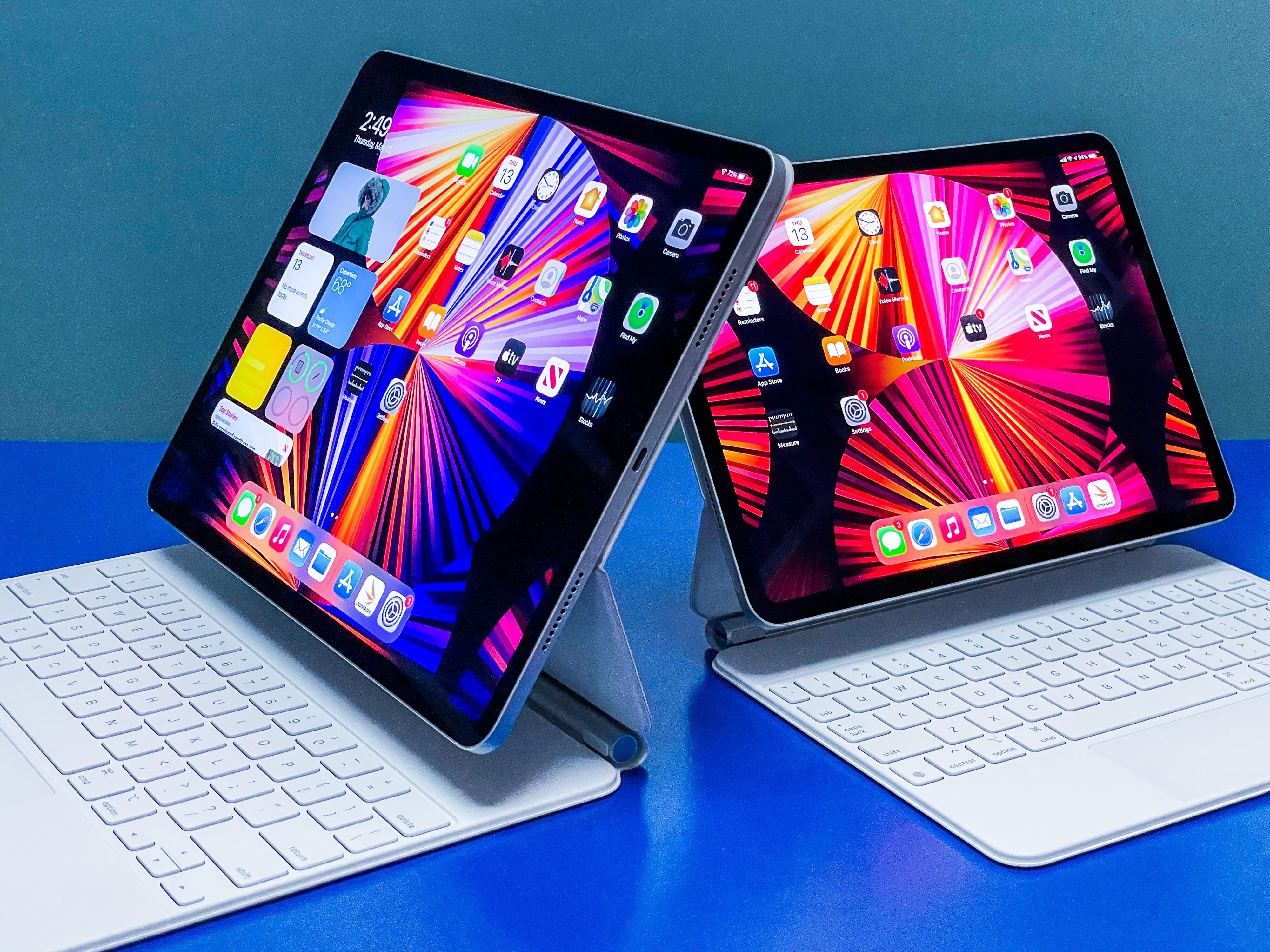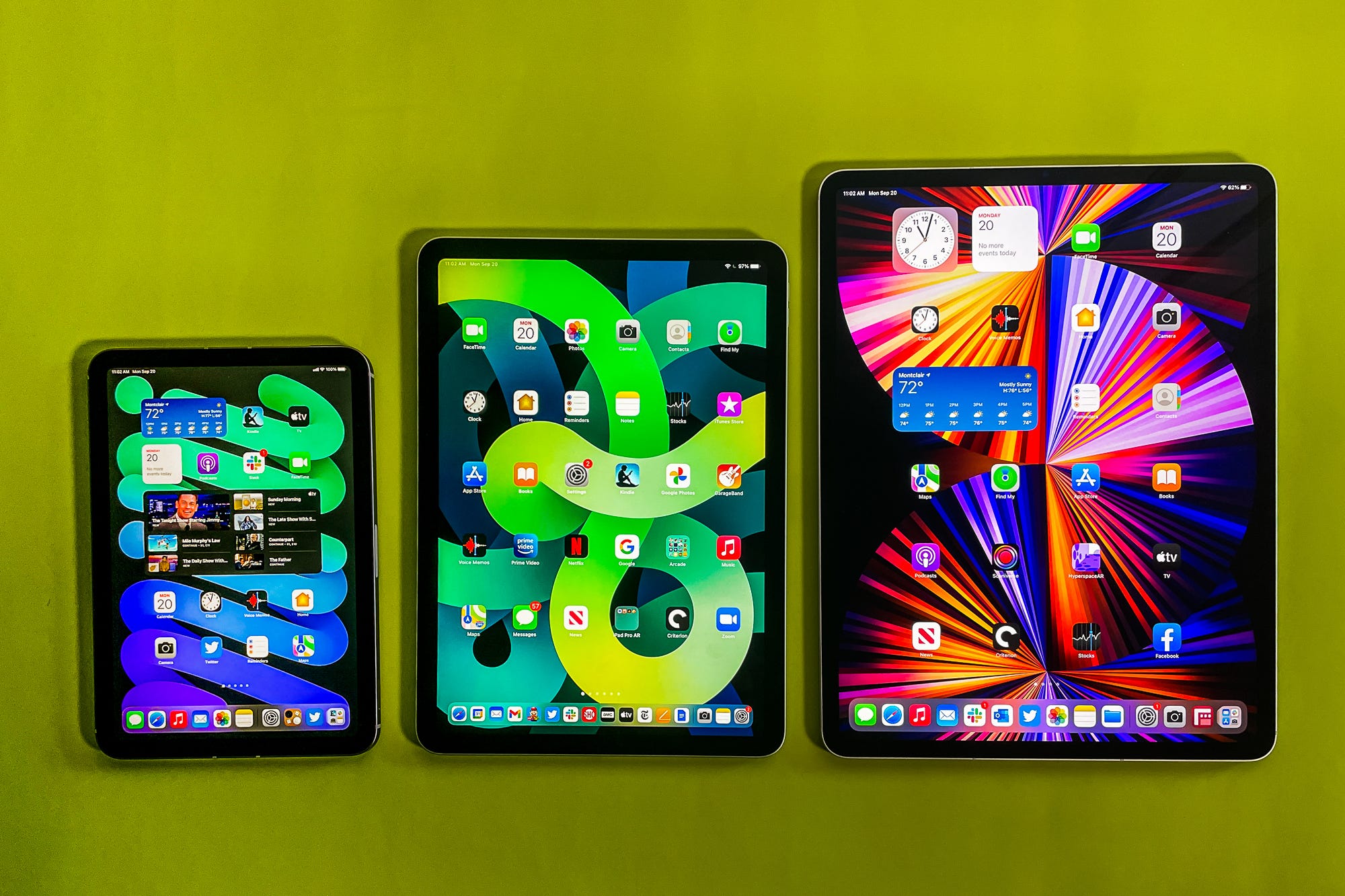An Technology blog focusing on portable devices. I have a news Blog @ News . I have a Culture, Politic and Religion Blog @ Opinionand my domain is @ Armwood.Com. I have a Jazz Blog @ Jazz. I have a Human Rights Blog @ Law.
Saturday, October 30, 2021
Friday, October 29, 2021
Thursday, October 28, 2021
Wednesday, October 27, 2021
What is the iPad Pro, now that new MacBook Pros are here? - CNET
What is the iPad Pro, now that new MacBook Pros are here?
"Commentary: Is it a laptop replacement? Is it really pro? It's got to be something for a starting price of $799.
What is a Pro device, really?
"Pro" may be the most inconsistently used word in consumer tech. It originally denoted a product for professionals -- duh -- but it's also often used to indicate luxury. Apple's XDR Pro OLED display? That's for professionals. The iPhone 13 Pro? That's an iPhone 13 but just nicer -- although those cameras are really nice.
The term has also meant different things in the same product line. For the past few years, the MacBook Pro was really an improved MacBook Air. The new MacBook Pros unveiled last week, meanwhile, really are for professionals. They're bringing back a bunch of ports, adding freakishly powerful M1 Pro and Max chips and getting a Mini LED display that feels a lot like what the iPad Pro already has.
So, right, the iPad Pro. It's a hard device to categorize, marketed as both a tablet and a laptop. It's got "Pro" in its name, yet it's hard to immediately grasp how it differs from the nearly identically designed iPad Air (or even other iPads). The 2021 iPad Pro even comes with an M1 chip, from the same family of processors used to power Apple's MacBook Pros. That sounds like they'll be similar, that the MacBook and iPad lines are converging. Not quite.
Is the iPad "Pro" because it can replace your laptop as a daily driver? When you consider there are four iPad subcategories, including a newly improved iPad Mini, who is this for? Using the 12.9-inch iPad Pro for nearly two months has cleared up some of my confusion on where the iPad exists next to MacBooks... and what "pro" on iPad means.
First, the iPad Pro is not a laptop replacement. Second, this is a device for professionals. And that's the point. Being a device that's truly for professionals means not being for everyone else.
Is the iPad Pro your next laptop?
The iPad Pro is a dream machine, one that many people, including me, have fantasized about being a proper laptop replacement. A stylish slate that can attach to a keyboard, and that has Apple Pencil support for notetaking? Yes. Apple's Magic Keyboards, which come with keys and a trackpad, get the iPad Pro within sight of being a feasible daily-driver laptop. Sadly, it's not quite there.
Hardware isn't the issue. The Magic Keyboard is comfortable enough despite being small, battery life isn't a problem, and the iPad Pro is certainly not lacking in power. The problem is that the iPad Pro runs iPadOS, which is still more similar to a phone's operating system than to a computer's.
In most cases, the quirks of iPadOS just require simple workarounds. For example: Google Docs. The Google Docs app is clunky compared to the browser experience, as the app requires you to toggle between read and write modes. The solution I quickly found was to access Google Docs via the Safari browser, rather than the app. I had to rethink many small tasks in this way, but after a few days I was able to do almost my whole job on the iPad Pro.
Almost everything.

The iPad Pro is almost, kind of a laptop.
Scott Stein/CNETI can do 98% of my work on the iPad Pro, but unfortunately the remaining 2% is crucial. I can write stories fine in CNET's content system, for instance, but often have trouble publishing. Obviously, that's a problem. Similarly, our email client often gives me grief in all sorts of boring but painful ways -- our version of Outlook can copy and paste on computers, but not my iPhone or iPad Pro -- making it unreliable. None of this is Apple's fault. It can't help it if companies build tools to work on computers rather than hybrid operating systems like iPadOS, but the reality is that most companies won't have repurposed internal tools for iPads.
As far as things Apple can control, the biggest item on my iPad wish list is the ability to dual-screen with an external display. At the moment you can mirror the iPad Pro's screen on an external display, but you can't extend one screen into the next. Given the tablet's power, and its USB-C input, this feels like something Apple could (and eventually will) unlock with a software update rather than a hardware limitation.
Many had hoped that real multimonitor support would come with iPadOS 15, which hit iPads in September. That wasn't the case. Instead, iPadOS15 offers a few other improvements that make the iPad Pro smoother to work with: It makes multitasking more convenient, integrates widget support for the homepage and adds a nifty feature that lets you bring up Notes with a diagonal swipe from one of the corners if you're using an Apple Pencil.

iPad Mini, iPad Air, iPad Pro 12.9-inch: a progression of sizes.
Scott Stein/CNETThe quality of the display and processor
iPadOS15's updates definitely improve the iPad Pro experience -- as unexciting as widgets are in 2021, I found them particularly helpful -- but don't radically change it. But that's the point: You shouldn't buy the iPad Pro expecting it to be a laptop.
It goes back to that fuzzy word, Pro. Pro doesn't mean "the best version of," it means "for professionals." The iPad Pro is like the XDR Pro display in that sense. Many of us see that monitor's $6,000 price tag and scoff, while a set of creative professionals see it as an alternative to industry-level monitors that run into the five figures. They don't see a fancy screen, they see a device that solves a problem. Same with the new 16-inch MacBook Pro, which can be configured up to $6,000.
There are many professionals who look at the iPad Pro and see a problem it'll help solve. They could be creatives who see the 2021 iPad Pro's extra processing power and RAM, which help to make apps like Procreate, LumaFusion and Photoshop run more smoothly. They could even be tennis players, some of whom apparently love an app that takes advantage of the iPad Pro's lidar cameras.
The MacBook Pro still doesn't have a touchscreen, or work with a Pencil stylus, or have the iPad's advanced cameras. The iPad Pro is that art and photo tool, more than anything. The rest? Maybe you need to consider something else. That means if you don't already know how it'll make you more productive, you're probably better off getting an iPad Air, Mini or a regular ol' iPad.
Or, very possibly, a Mac."